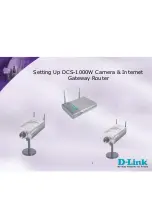
Chengdu Ebyte Electronic Technology Co.,Ltd
E22-900M22S User manual
Copyright ©2012–2018
,Chengdu Ebyte Electronic Technology Co.,Ltd
5
12
MISO
output
SPI data output pin
13
MOSI
input
SPI data input pin
14
NSS
input
The module chip selection pin is used to start an SPI
communication
15
SCK
input
SPI clock input pin
16
GND
Ground wire, connected to the power reference ground
17
NC
18
DIO3
Input/output
Configurable universal I/O port
19
DIO2
Input/output
Configurable universal I/O port
20
DIO1
Input/output
Configurable universal I/O port
Chapter 4 Basic operations
4.1 Hardware design
It is recommended to use DC regulated power supply to power the module, the ripple coefficient of the
power supply is as small as possible, and the module must be reliably grounded.
Pay attention to the correct connection of the positive and negative terminals of the power supply, such
as reverse connection may cause permanent damage to the module;
Check the power supply, making sure it's between recommended supply voltages, as exceeding the maximum
value can permanently damage the module.
Check the stability of the power supply, the voltage cannot fluctuate dramatically and frequently;
When designing a power supply circuit for a module, it is often recommended to retain more than 30% margin,
which is conducive to long-term and stable work of the whole machine.
The module should be kept away from parts with high electromagnetic interference, such as power supplies,
transformers, and high-frequency cables.
High-frequency digital cable routing, high-frequency analog cable routing, and power cable routing must
avoid under the module. If necessary, pass under the module, assuming that the module is welded at the Top
Layer, copper is laid on the Top Layer of the contact part of the module (all copper is laid and well grounded),
and it must be near the digital part of the module and wired at the Bottom Layer.
Assuming the module is welded or placed at the Top Layer, arbitrarily wiring at the Bottom Layer or other
layers is also wrong, affecting the module's stray and receiving sensitivity to varying degrees.
Assuming that there are large electromagnetic interference devices around the module will greatly affect
the performance of the module, and according to the strength of the interference suggest to stay away from
the module, if the circumstances allow for appropriate isolation and shielding;
Assuming that there are wires around the module with large electromagnetic interference (high-frequency
digital, high-frequency analog, power cable) will also greatly affect the performance of the module, it is
recommended to stay away from the module according to the strength of the interference, and do appropriate
isolation and shielding if circumstances permit.
Communication lines using 5V level must be connected in series with 1k-5.1k resistors (not recommended,
there is still a risk of damage);
Try to stay away from TTL protocols at the 2.4GHz physical layer, such as USB3.0.






























